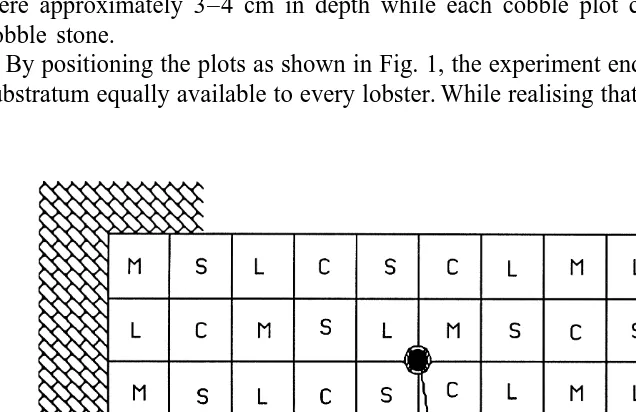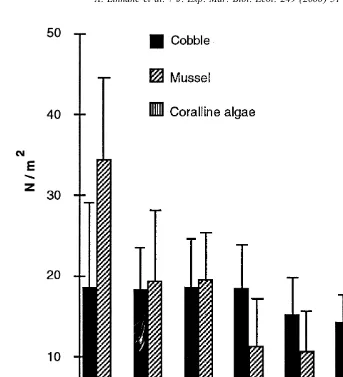Directory UMM :Data Elmu:jurnal:J-a:Journal of Experimental Marine Biology and Ecology:Vol249.Issue1.Jun2000:
Teks penuh
Gambar




Dokumen terkait
In laboratory experiments, summer flounder (271–345 mm total length, TL) preferred demersal winter flounder to a pelagic fish (Atlantic silversides) and a benthic invertebrate
Survivorship of fragments was also affected by type of substratum; the greatest mortality (58% loss within the first month) was observed on sand, whereas fragments placed on top of
To compare the effect of snail density on the change in dispersal after resources had declined to steady state levels I regressed the difference in the proportion of snails
During the stationary phase of a batch culture of the epipelic diatom Cylindrotheca closterium, accumulation of exopolysaccharides and intracellular carbohydrates was observed..
Complexity and structural components affected the richness, total density, and the densities of two of the three most common gastropods in this mid-shore rocky intertidal
Chapter 7 (Communication and Cognition) gives an insight into this still controversial subject while chapter 8 (Behaviour) describes and compares the different behavioural
Hiroya Kawanabe was a leading Japanese fishery biologist who will be remembered for his excellent contributions to the rather controversial and interesting issue on the link
The mean feeding speeds of five basking sharks between 4.0 and 6.5 m in length observed in the present study were 29–36% lower than the optimal filter-feeding speeds for fish of

